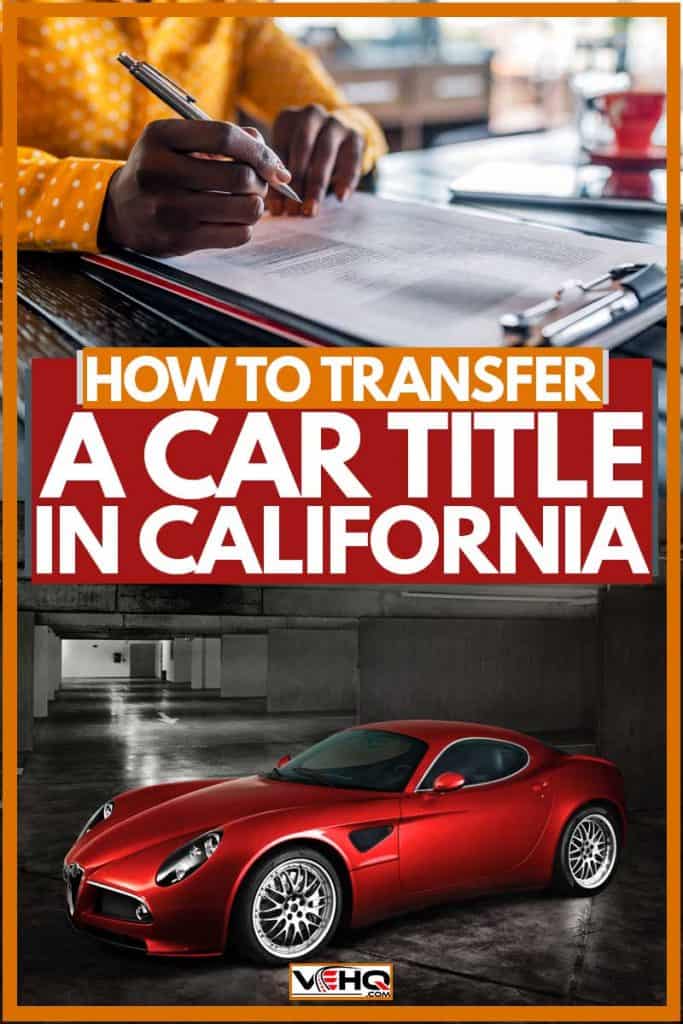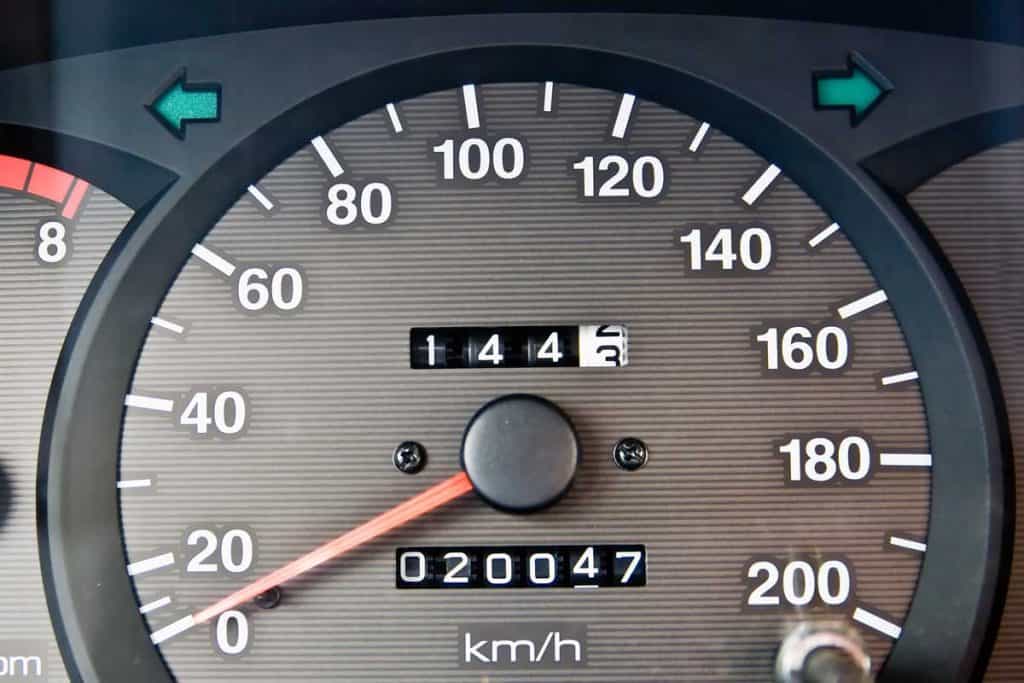 Transferring a car title is simple in many states, but California has a few special rules that can make it more complicated. We've researched the steps you'll need to take so you can be prepared when it comes time to sell or otherwise transfer your vehicle.
Transferring a car title is simple in many states, but California has a few special rules that can make it more complicated. We've researched the steps you'll need to take so you can be prepared when it comes time to sell or otherwise transfer your vehicle.
To transfer a car title in California, you must -
- Have the Certificate of Title in hand (the pink slip)
- Obtain the seller's signature
- Secure the lienholder's signature, if applicable
- Obtain the buyer's signature
- Provide an odometer disclosure for certain cars
- Possess a smog certification
- Pay a transfer fee
- Pay any other fees or taxes
- Submit a Notice of Transfer and Release of Liability
There may be more or fewer steps depending on the type of transfer and the condition and age of the vehicle.
While it may not take much time, you do need to know what to expect and what to bring along when transferring your vehicle. There's a lot of paperwork and potential fees involved regardless of what side of the transaction you're on. Read on for more details on the process of transferring a car title in California.
What Forms Do I Need To Transfer A Title In California?
You need a few different forms to transfer a vehicle title in California. These include the title, a smog certificate, an odometer disclosure, and, depending on the financing status of the auto, a Lien Title Holder Release.
What Form Do I Use To Transfer A Vehicle?
Per the California DMV, you need to have the vehicle's Certificate of Title in hand to start a transfer. The document is also known as the pink slip. If you don't have one, you'll first need to submit an Application for Duplicate or Paperless Title to the DMV.
Once you have the title, both the seller and buyer must fill in their information and sign the document. The title serves as the transfer paperwork, and you'll give it to the buyer after the transaction is complete.
Then, you must pay a transfer fee, which is $15 according to the DMV. These are the basic steps involved in transferring a title, but there are more depending on the vehicle's condition, year, and purpose.
Do I Have To Have A Smog Certificate To Sell A Car?
The most common form you'll encounter when transferring a car in California is a smog certificate. California requires every buyer to include a smog certificate with any vehicle they sell, except for some limited exceptions.
Are you wondering about expenses? See our post on How Much Does a Car Inspection Cost? for an accurate estimate of fees.
Smog checks must be performed within 90 days before the sale and transfer of the vehicle. If a car doesn't pass the smog certification, you cannot sell it until repairs have been made and it passes the test.
Certain types of vehicles don't need a smog certification, including any vehicle that's a 1975 or older year model (gas-powered) or 1997 and older (diesel-powered). Other exceptions include golf carts, two-cycle engine vehicles, motorcycles, and electric cars.
Another exception to the smog rule is when you're giving the vehicle to a family member. In this case, you'll have an exemption from the rule.
Want to know more about car inspections? See our related article, 16 Things That Will Fail a Car Inspection, for more information.
What Cars Need An Odometer Disclosure?

If your car is older than ten years, you must provide the current odometer reading when selling it. There is a space for the figure on the title.
Per the DMV, any vehicle that's ten years old or newer doesn't require an odometer disclosure. Other vehicles that are exempt include commercial rigs that are over 16,000 pounds.
Can I Sell A Car with A Loan Balance?

You can sell a car that you're still paying on, but only if the lienholder agrees. You must get the signature of the lienholder on a Lien Satisfied/Title Holder Release.
Selling a car with a remaining balance on the loan isn't always wise, and it's not always possible. Ultimately, it's up to the lender whether you can sell the vehicle.
Do I Have To Pay Fees On The Sale?
While DMV says to check with your tax consultant on whether you must report any earnings from the sale, you won't be paying other fees beyond the transfer fee.
As the DMV explains, the fees for the transfer are due when the application is submitted, and the buyer does that part. There may be a use tax, which depends on where the new owner lives, plus registration renewal fees, duplicate title charges, and other miscellaneous fees.
How Do I Make Sure I'm Not Liable For A Car I Sold?
What is most important for sellers is that they file a Notice of Transfer and Release of Liability to the DMV immediately after the sale. The DMV requires that you do this within five days of the sale, and it's your responsibility, not the new owner's.
By filing the release of liability, you're ensuring that you won't be liable for anything the new owner does to or with the vehicle. That said, you'll still be on the registration for the car until the new owner finishes the paperwork and pays all their fees.
How Do Family Vehicle Transfers Work In California?
Family vehicle transfers work a lot like standard automobile transfers in California. However, one notable difference is that you don't have to get a smog certificate for the car. Instead, you need to provide a Statement of Facts form to be exempt from the tax and smog rules.
If the car is less than ten years old, you must still provide an odometer disclosure. Plus, you will still pay the transfer fee.
Can I Transfer A Car Title Online In California?
California's DMV offers an online portal for many services, but title transfer isn't one of them. They do link to third-party 'partners' where buyers can start the transfer process.
You will pay a fee for services with those companies, but it can be more convenient than handling paperwork via the DMV in some instances. But this is more convenient for buyers than sellers since your only role as the seller is signing things over.
But if you've lost your title, need to make corrections, or need to renew your registration before selling a car, you can use the third-party companies for that, too.
Does The Seller Of A Car Have To Be Present At Title Transfer?
There's a bit of a misconception that the seller of the car must meet the buyer at DMV to complete the transfer. In reality, you provide most of the paperwork to the new owner, and then they complete the process with DMV.
You can sell a vehicle by filling in the seller information on the title, then handing the title over to the new owner. However, they won't be able to complete the transfer unless you provide the smog certificate (as necessary), too.
If you don't know the prospective buyer very well, it may make sense to ask for their ID to ensure they're up-front about their identity. And it's not unheard of for buyers and sellers to visit the DMV together to start the paperwork for a title transfer.
By far, the simplest way to ensure a smooth transfer is by completing all your paperwork in advance to make it easier for the new owner. Then, the release of liability covers all your bases moving forward.
